WHOSE NUTS?
Nuts are underrated as a food and in the garden. After all, how many gardeners plant nuts? In the landscape, nut plants range from majestic trees to graceful shrubs. As a food, nuts are an excellent source of protein, heart-friendly fats, and all sorts of other nutritional goodies known and unknown. Did you ever see a fat or tired squirrel? (True, we wouldn’t see those couch potato squirrels as they lounged in their den.)
Right now, I am enjoying the fruits of my nutty labors. Some nuts — most nuts that grow around here, in fact — need to be cured before they taste their best. Hazelnuts, ready in September, were good as soon as harvested but even better after resting a couple of weeks. Chestnuts, likewise ready in September, were likewise pretty good immediately, but sweetened after a few weeks in storage. The hazelnuts grow on arching shrubs that could instead be trained to small trees. The chestnuts are picturesque, spreading trees. Both hazelnuts and chestnuts are fast-growing and begin to bear within 5 years or less after planting.
The improvement in flavor from curing is dramatic when it comes to black walnuts and their kin. They were harvested (from the ground) in October, hulled (a messy job), and left outdoors in the sun a few days to dry before being moved to a loft area above the garage. The loft area was cool, airy, and — very important — squirrel-proof. Now they are ready to crack and eat.
—————————————-
Black walnuts are, in my opinion, the best-tasting of the nutty lot. And the trees grow wild throughout much of eastern U.S. This is one nut that I have not planted because I inherited a large tree right on my property. Over the years, new trees have also sprung up to bear nuts. Growth is fast and the trees become quite large. The downside to growing black walnuts for eating is that they are a hard nut to crack. After years of banged thumbs from cracking black walnuts on a concrete floor with a hammer, I purchased the Master Nutcracker, which is elegantly designed, somewhat pricey, but very effective. Separating the nutmeats and picking them out from their cracked shells makes for a convivial accompaniment to after-dinner conversation in winter.
Butternuts, also native to eastern U.S., but not as widespread and currently threatened with a blight, need the same treatment as black walnut and are equally tough nuts to crack. I don’t bother with them because the trees, in contrast to black walnut, are hard to find. Their flavor also has less appeal.
Butternut has naturally and been deliberately hybridized with heartnut, a Japanese-type walnut, to yield what’s known as a buartnut. Many trees thought to be butternuts are actually buartnuts, such as the gigantic, spreading tree I “discovered” in Rosendale a couple of years ago. My young tree, only a few years old, is very fast growing and already shows inklings of future grandeur — and nuts, in the form a few flowers last spring (that, unfortunately, failed to develop into nuts).
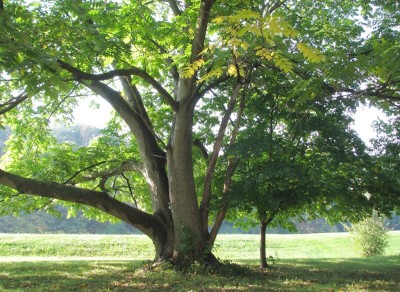 |
| Here’s the Rosendale tree in summer. |
I did revisit the Rosendale buartnut in September and rushed to gather up as many nuts as I could ahead of squirrels, who were also working the tree. Those nuts are now cured. Heartnuts are known for their ease of cracking, a trait also borne out in the buartnut offspring. With the Master Nutcracker, the shells popped open to reveal whole nutmeats. The flavor was mild and a little dry, good for variety and ease of access but not nearly as tasty as black walnuts.
The nut menu needn’t end there. The season here is too short to ripen pecan nuts, although the trees will survive. Enter hicans, hybrids of hickory and pecan with a shorter ripening season. I’ll report back in a few years. Hickories are a native nut that is delicious although small, hard to crack, and yielding little nutmeat. Still, there are some named varieties that improve in all respects. I planted two in the spring of 2011 and hope for some nuts to try within five years. I also have some young Persian walnut trees, the one nut among this bowl of nuts for which I am not hopeful. Persian walnuts blossom early, so the flowers often succumb to subsequent spring frosts, are susceptible to some serious diseases, and — mine, at least — are on a squirrel highway (beneath power lines).
—————————————————-
Have I been mentioning squirrels? Ah, squirrels, once the bane of my nutty endeavors. In years past, these “tree rats,” as they are sometimes nonaffectionately referred to by gardeners, have stripped my hazelnut shrubs bare.
For now, I have the creatures under control. They won’t wander into the high grass that I let rise up through the summer around the hazelnuts. Chestnut burrs are too spiny for them — until the nuts drop out, by which time I’ve gathered them up. My hickories and buartnuts have not yet begun to bear, but the trees are isolated so a temporary squirrel guard of a cylinder of sheet metal should keep the squirrels from climbing. And black walnuts? There are plenty for everyone. The squirrels and I gather them and I still see plenty left on the ground.


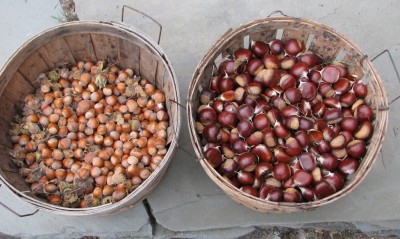
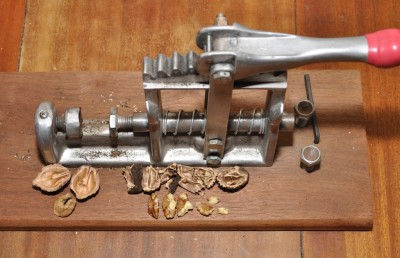

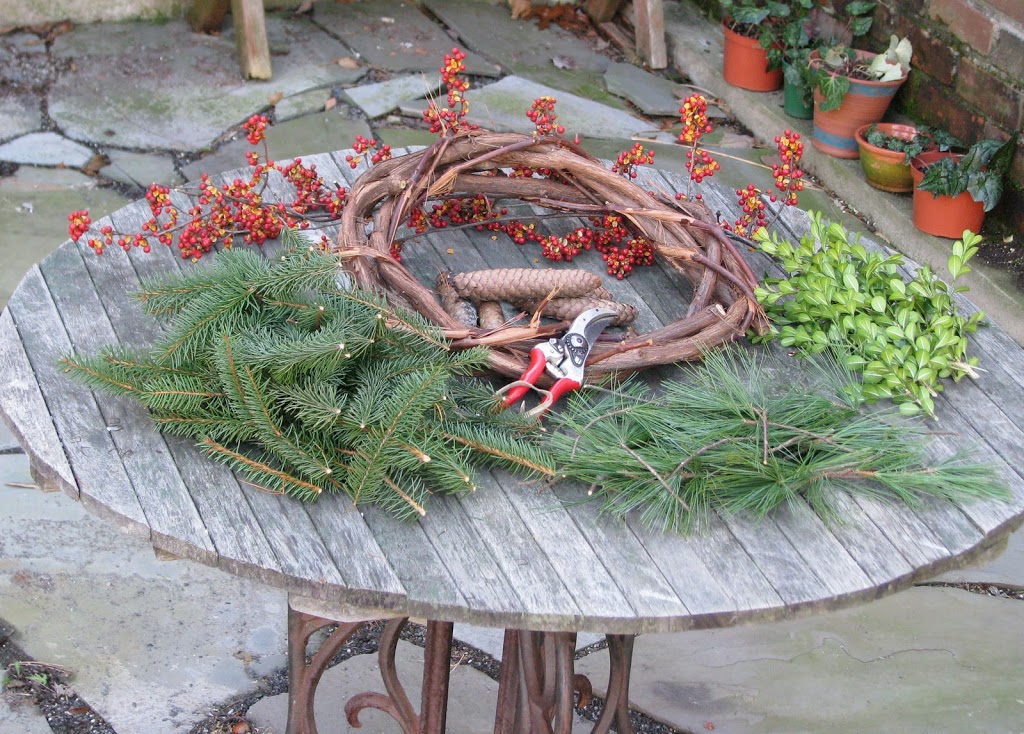
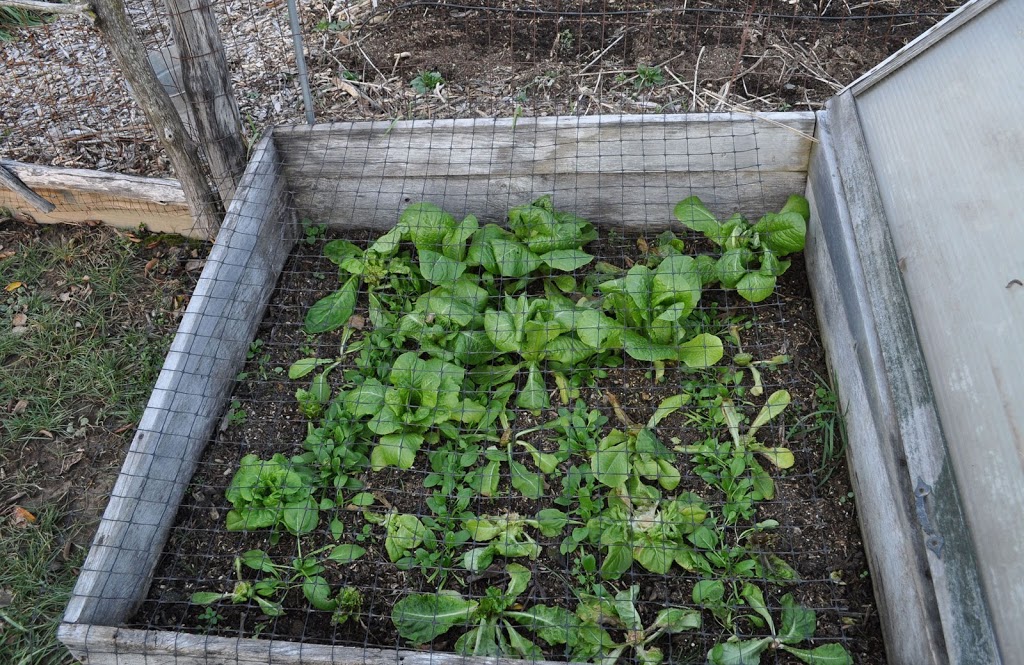
Hi, I wonder where the Rosendale buartnut tree is located. Kind regards, Johanna Nyström, Sweden
At the end of Snyder Ave., near the river.
What do you do with tough fibrous material like the burrs of chestnuts, or the “cherry bombs” from sweet gum trees? While you are clearly a devotee of composting, it would seem that these would take inordinately long to break down, and would just compromise the quality of the compost. Would these or similar materials be suitable as mulch (either in whole form or somehow shredded), or are they generally considered unusable?
I planted my chestnuts in a location where I never walk, except when harvesting, so leaving the burrs on the ground is no problem. Sometime before harvest I rake them out of the way so that it’s easier to walk and pick up the fresh crop from the ground. I’ve never tried composting them but would be interested in whether or how much they would compost; my usual compost cycle is one year.